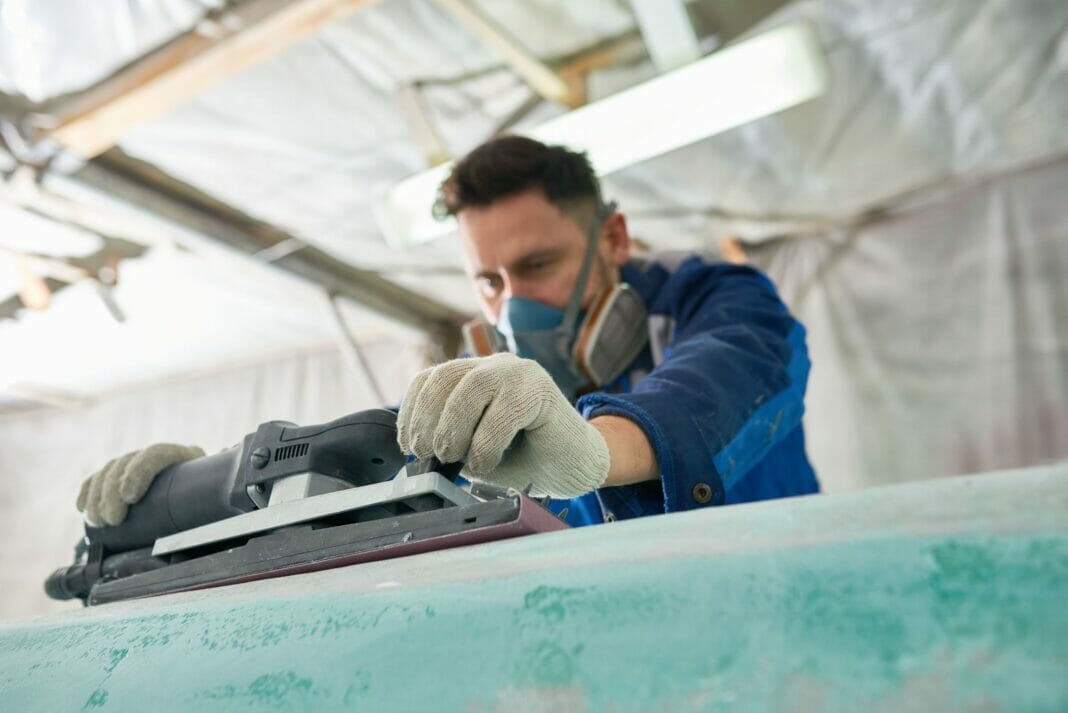Boat ownership comes with a unique set of responsibilities and concerns, one of which is maintaining the boat’s gelcoat. This protective layer can encounter damage due to various factors, leading to the need for repair. This comprehensive guide will walk boat owners through everything they need to know about gelcoat repair, including understanding what gelcoat is, recognizing when it needs repair, and step-by-step instructions on how to perform a gelcoat repair.
Understanding Gelcoat
Gelcoat is a layer of pigmented resin applied to the exterior of boats, most commonly used on fiberglass boats. This layer serves not only as a decorative finish but also as a protective barrier against the boat’s exposure to the harmful elements of water, sunlight, and general wear and tear. Over time, the gelcoat may become worn, cracked, or damaged, necessitating repair.
Why is it Important to Repair Gelcoat Damage?
There are several reasons why repairing gelcoat damage is essential:
- Protection: The gelcoat provides a defense against water intrusion, harmful UV rays, and abrasion. Damaged gelcoat may no longer fully protect the boat, leading to more extensive damage and costly repairs.
- Aesthetics: A well-maintained gelcoat maintains the overall appearance of the boat, increasing the resale value and making the boat more appealing to potential buyers.
- Prolonging the life of the boat: Repairing minor gelcoat issues before they become significant problems can have a substantial impact on the life of the boat.
Identifying Gelcoat Damage
Before repairing a damaged gelcoat, it’s important to recognize the different types of damage that may occur. The most common types of gelcoat damage include:
- Scratches: Gelcoat scratches occur from normal wear and tear or coming into contact with a sharp object.
- Cracks: Stress cracks, also known as spider cracks, are small cracks that radiate outward and often appear near fittings or high-stress areas.
- Chips: Gelcoat chips occur when an impact or pressure displaces a small section of gelcoat.
- Gouges: A gouge occurs when a sharp object penetrates the gelcoat and may involve damage to the underlying fiberglass.
- Oxidation: Over time, the gelcoat may become dull or chalky in appearance due to exposure to the elements.
Preparing for Gelcoat Repair
Before embarking on a gelcoat repair project, gather the necessary tools and materials:
- Gelcoat repair kit or marine-grade polyester resin
- Pigment (if coloring the resin)
- Wax paper or plastic wrap
- Mixing cups and stir sticks
- Sandpaper (ranging from 220 to 600 grit)
- Razor blades and/or utility knife
- Wet or dry sandpaper (600, 800, and 1,000 grit)
- Polishing compound and wax
- Buffing pad and electric buffer (optional)
- Clean rags
- Protective gear (gloves, eye protection, respirator or dust mask)
Performing a Gelcoat Repair: Step-by-Step Instructions
Follow these steps to repair gelcoat damage effectively:
Step 1: Clean the Damaged Area
Thoroughly clean the damaged area to remove dirt, grime, and wax using a mild soap and water or a marine-grade cleaner. Rinse with clean water and allow the area to dry completely.
Step 2: Assess the Extent of the Damage
Determine the level of repair needed based on the type of damage. For small, shallow scratches or oxidation, sand and buff the area. For stress cracks, chips, or gouges, proceed to fill and repair.
Step 3: Sand the Area
Using 220-grit sandpaper or a sandpaper suitable for the level of gelcoat damage, sand the area surrounding the damage. Be careful not to sand too deep, as this may expose the underlying fiberglass.
Step 4: Mix the Repair Material
Following the manufacturer’s instructions, mix the gelcoat or polyester resin with the pigment to match the boat’s color. Add the hardening agent and mix thoroughly.
Step 5: Fill the Damaged Area
For scratches or small cracks, apply the gelcoat mixture using a toothpick or small brush. For larger areas, such as chips and gouges, use a small putty knife to press the mixture into the area. Be sure the mixture fully infiltrates the damage.
Step 6: Cover the Repair
Apply a sheet of wax paper or plastic wrap over the repair, smoothing it flat against the surface of the boat. This helps ensure a smooth finish.
Step 7: Allow the Repair to Cure
Following the manufacturer’s guidelines, allow the repair to cure. This time may vary based on temperature and humidity.
Step 8: Remove the Covering and Shape the Repair
Peel away the wax paper or plastic wrap and inspect the repair. If necessary, use a razor blade or utility knife to trim excess material and shape the repair to match the surrounding surface.
Step 9: Sand and Polish the Repair
Progress through sanding with increasingly fine grits of wet or dry sandpaper, starting with 600 grit and finishing with 1,000 grit. Rinse and dry the area between grits. Finish by applying polishing compound and wax, buffing the area to a high gloss.
Conclusion
Maintaining your boat’s gelcoat is an essential aspect of boat ownership. Regular inspection and repair of gelcoat damage can prolong the life of your boat, maintain its appearance, and ensure ongoing protection. With the proper tools, materials, and knowledge, boat owners can confidently undertake gelcoat repairs and keep their boats looking and performing at their best.


